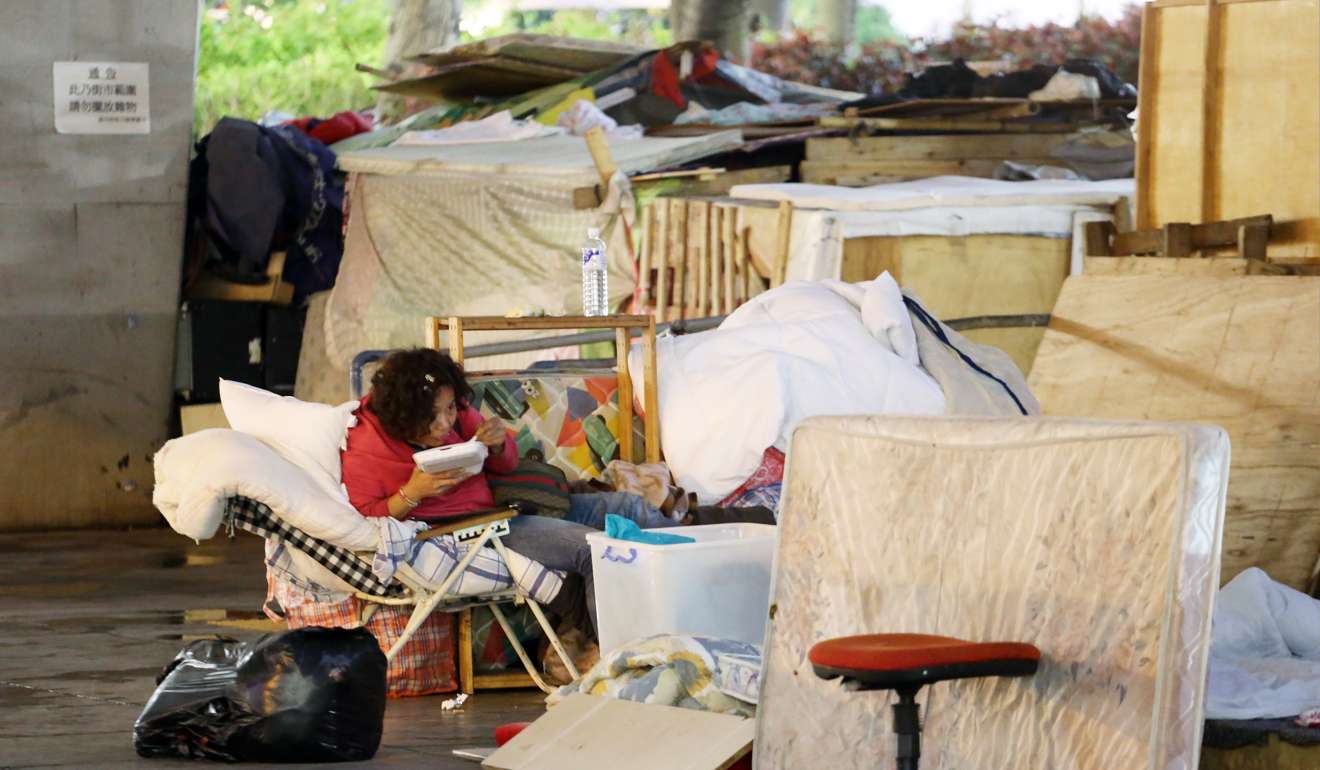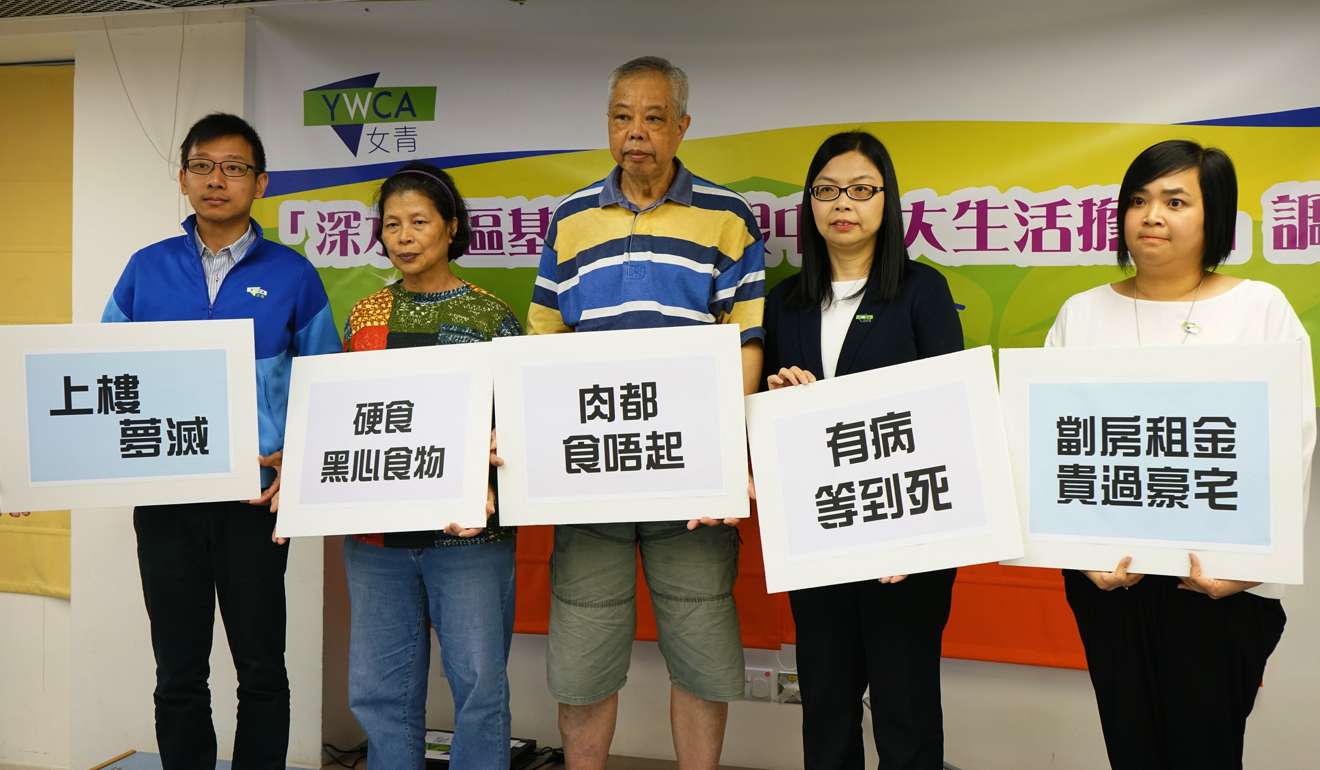
Living conditions in Hong Kong’s poorest district have got worse in last four years ago
Respondents in Sham Shui Po included 430 residents of subdivided flats, private homes and public housing
Living conditions for grass-roots families in Hong Kong’s poorest district have worsened compared with four years ago despite government efforts to alleviate poverty, a survey has found.
Residents living in Sham Shui Po in Kowloon were more stressed, inhabiting more cramped conditions and forking out more for ever-increasing rents than in 2012, according to survey results from the city’s Young Women’s Christian Association (YWCA).

It found that, compared with four years ago, residents there were more stressed about livelihood issues such as high rents, inadequate health care services and costly living expenses.

Costly food expenses, personal health and expensive rents were ranked as the top three concerns.
“The results show that their livelihood has worsened in the past few years and they struggle with even the most basic necessities of life,” YWCA supervisor Bettina Ng Tsui-ping said.
Their livelihood has worsened in the past few years and they struggle with even the most basic necessities
This is despite government efforts such as introducing subsidies and allowances to those living below the poverty line, Ng added.
The results also showed there was an average of 2.8 people living in subdivided flats, compared with 2.19 people in 2012.
Unsurprisingly, rents of subdivided flats have gone up over the past four years. In 2012, more than half of those surveyed were paying less than HK$1,500 in rent; last year this number had dropped to less than 9.5 per cent.
The percentage of respondents paying between HK$4,500 and HK$6,000 for slightly larger units increased dramatically – from 0.5 per cent in 2012 to 20.6 per cent last year.
Watch: “Coffin homes“ sprout in Hong Kong
Chow Yue-shui, 71, a resident of a subdivided flat in Sham Shui Po, said: “My rent is increasing every single year now.”

“Even if residents are earning more with minimum wage, the pace of wage increases cannot keep up with increases in living expenses,” Ng said.
The YWCA urged the government to boost public housing supply, reintroduce a one-off allowance for the living poor, and consider expanding the elderly health care voucher scheme to include grass-roots families.

